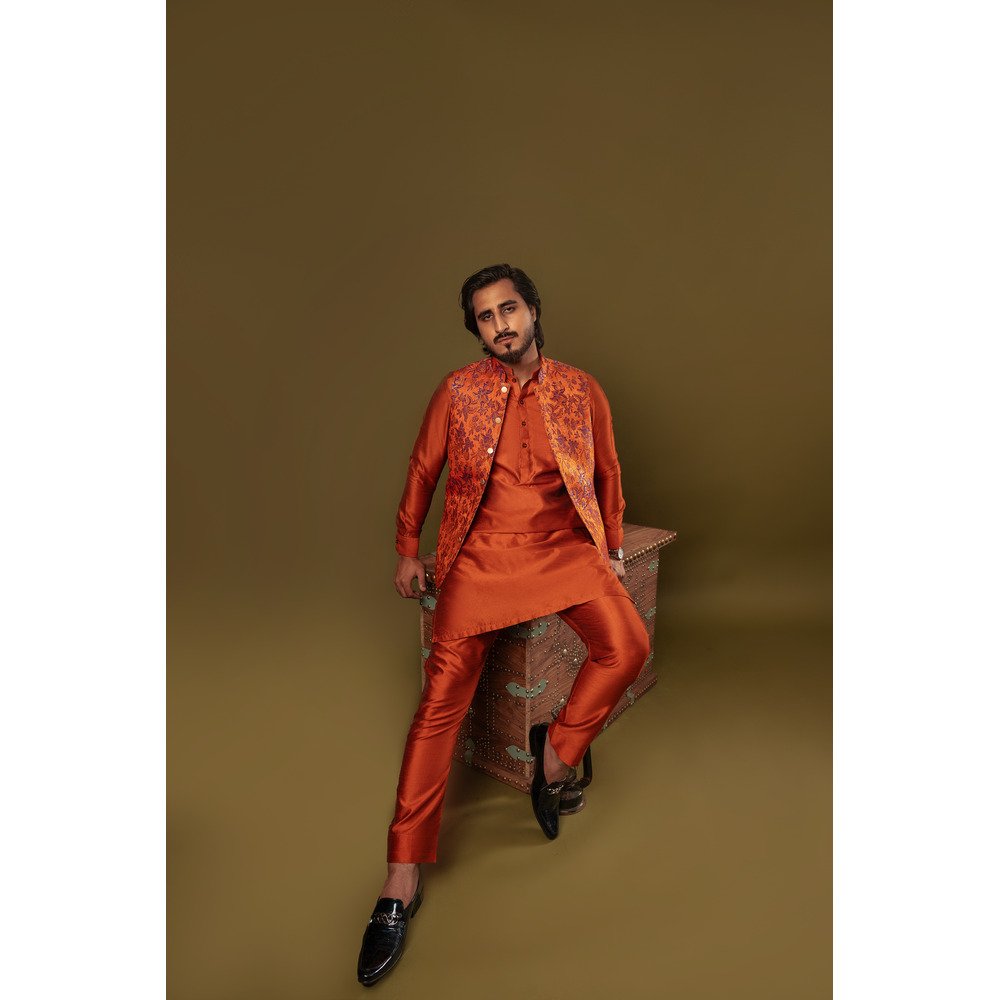The Ultimate Guide to Sherwani Designs: Tradition, Trends, and Styling
Introduction
The black sharwane is one of the most iconic and elegant traditional garments in South Asian fashion, particularly in Indian, Pakistani, and Bangladeshi cultures. Known for its opulent look, the sherwani combines regal style with intricate craftsmanship, making it a popular choice for weddings and ceremonial events. With its roots deeply embedded in history, the sherwani has evolved over time, offering a range of designs that balance traditional artistry with contemporary elegance.
This guide explores the rich history, designs, materials, and styling options of the sherwani, celebrating its role in cultural heritage and fashion.
The History and Cultural Significance of the Sherwani
The sherwani’s origins date back to the Mughal era, where it was the attire of choice for the nobility. Initially influenced by Persian and Central Asian clothing, the sherwani was a long, coat-like garment worn over a kurta and paired with a churidar (fitted trousers) or salwar. Traditionally, it was made of heavy, luxurious materials adorned with rich embroidery, befitting royalty.
Over time, the sherwani became a symbol of South Asian cultural heritage and is now primarily worn on formal occasions, such as weddings, religious ceremonies, and festivals. The garment represents elegance, sophistication, and honor, making it an essential part of a groom’s wardrobe in South Asian weddings.
Classic and Modern Sherwani Designs
1. The Traditional Embroidered Sherwani
The classic embroidered sherwani remains a timeless choice. Crafted from fabrics like silk, brocade, or velvet, these sherwanis often feature intricate hand embroidery, such as zardozi, zari, and aari work. These embroidery techniques add a luxurious touch, giving the garment a rich, opulent look. Traditional designs often incorporate motifs such as floral patterns, paisleys, and Mughal-inspired art, maintaining an elegant and historical aesthetic.
Styling Tip: Pair a heavily embroidered sherwani with a contrasting stole and mojari (traditional Indian footwear) to complete the look. Opt for warm, earthy colors like maroon, gold, and beige for a classic vibe.
2. Contemporary Minimalist Sherwani
Modern fashion has introduced minimalist sherwani designs that are less ornate but equally stylish. These designs typically feature clean lines, subtle textures, and light embroidery or beadwork. Minimalist sherwanis are perfect for grooms and attendees who prefer understated elegance. They are typically available in muted colors, such as pastel shades or monochromatic tones, and crafted from lightweight materials like linen or silk-blend fabrics.
Styling Tip: Choose a minimalist sherwani in pastel shades, such as powder blue or blush pink, and pair it with a white or off-white churidar for a fresh, contemporary look.
3. Achkan-Style Sherwani
The achkan is a popular variant of the sherwani, characterized by its slightly shorter length and fitted silhouette. The achkan sherwani often has a more structured design, with buttoned details extending from the neck to the hemline. Originally associated with royal courts, the achkan adds a royal touch to formal attire while offering a bit more flexibility in terms of length and cut.
Styling Tip: Pair the achkan sherwani with jodhpuri pants or churidar to create a cohesive, royal look. Add a brooch or pocket square for an extra touch of elegance.
4. Jacket Sherwani
The jacket sherwani is a unique blend of the classic sherwani and contemporary layering styles. This design incorporates a shorter, often intricately designed jacket worn over a plain or lightly embroidered sherwani. This style allows for additional texture and layering, making it perfect for fashion-forward individuals who want to make a bold statement.
Styling Tip: Pair a jacket sherwani with contrasting colored pants or trousers for a stylish, layered look. Consider adding a matching stole to complement the jacket’s color and design.
5. Printed Sherwani
Printed sherwanis are becoming increasingly popular, especially for events with a casual or semi-formal dress code. These designs feature digital or block prints instead of heavy embroidery, making them lighter and more comfortable. Floral prints, geometric patterns, and Mughal motifs are common choices, adding visual interest without the weight of traditional embroidery.
Styling Tip: Choose a printed sherwani for daytime events, pairing it with plain churidar or trousers. Floral prints in soft pastels or light shades are perfect for a spring or summer wedding.
6. Anarkali Sherwani
Anarkali sherwanis are inspired by the flowy, floor-length Anarkali suits. This style has a flared silhouette that adds grandeur and drama to the outfit. Often embellished with intricate embroidery around the yoke and hemline, the Anarkali sherwani is perfect for men who want a royal, statement-making look.
Styling Tip: Pair an Anarkali sherwani with fitted trousers and a contrasting dupatta. Complete the ensemble with jutti or mojaris to achieve a traditional, elegant look.
Accessories to Complete the Sherwani Look
The sherwani look is incomplete without traditional accessories. Here are some essential items that enhance the elegance of the outfit:
– Turban/Pagri: The turban is a traditional headpiece that symbolizes honor and adds a royal touch to the sherwani. Opt for a turban in a color that complements the sherwani or contrasts it to create a striking look.
– Stole/Dupatta: A stole or dupatta draped over one shoulder adds an extra layer of elegance. Choose a stole with embroidery or embellishments for a rich appearance.
– Jutti/Mojari: Traditional Indian footwear like juttis or mojaris are a must-have with sherwanis. These shoes are often embroidered to match the sherwani, creating a cohesive, polished look.


